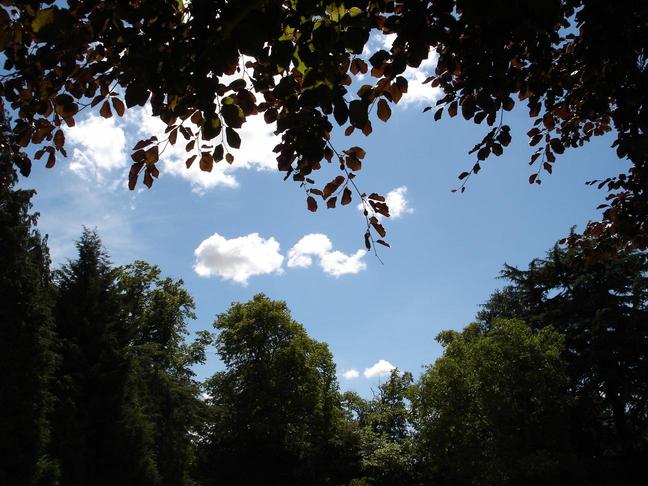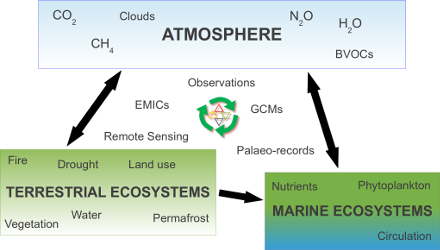Researchers in Cambridge use ecosystem modelling to study how carbon cycles between the biosphere (for example vegetation and soil) and the atmosphere, and what this means for climate.
 The terrestrial biosphere influences the atmosphere through many processes. Some of the most important include the exchange of CO2 and the partitioning of surface energy into latent and sensible heat fluxes. The sensitivity of the terrestrial biosphere to climate and atmospheric chemistry result in the biosphere and atmosphere behaving as a coupled system, with the potential for strong positive and negative feedbacks. Anthropogenic disturbance of natural ecosystems, climate, and atmospheric chemistry is currently changing this coupled system over much of Earth’s land surface. Understanding the coupled behaviour of the terrestrial biosphere and atmosphere is therefore a key research priority, not least because of the major role of terrestrial ecosystem in the global carbon cycle, but also because of the significance of surface characteristics for local and regional climate through biogeophysical effects.
The terrestrial biosphere influences the atmosphere through many processes. Some of the most important include the exchange of CO2 and the partitioning of surface energy into latent and sensible heat fluxes. The sensitivity of the terrestrial biosphere to climate and atmospheric chemistry result in the biosphere and atmosphere behaving as a coupled system, with the potential for strong positive and negative feedbacks. Anthropogenic disturbance of natural ecosystems, climate, and atmospheric chemistry is currently changing this coupled system over much of Earth’s land surface. Understanding the coupled behaviour of the terrestrial biosphere and atmosphere is therefore a key research priority, not least because of the major role of terrestrial ecosystem in the global carbon cycle, but also because of the significance of surface characteristics for local and regional climate through biogeophysical effects.
The HYBRID model is a detailed global model of terrestrial ecosystem dynamics. It is being used to understand the influence of climate and atmospheric CO2 variability on the distribution of vegetation types, productivity, and carbon stored in plants and soils. Components have been used to develop the land surface model of the GISS GCM modelE, and the model is currently being used in a number of projects, including IPCC assessments of climate change impacts for the IPCC Fifth Assessment Report (AR5) and for various projects within the GREENCYCLESII Marie Curie Initial Training Network.

GREENCYCLES II project overview. Atmosphere-biosphere interactions. [Credit: Bethan Jones & Andrew Friend, 2013]

